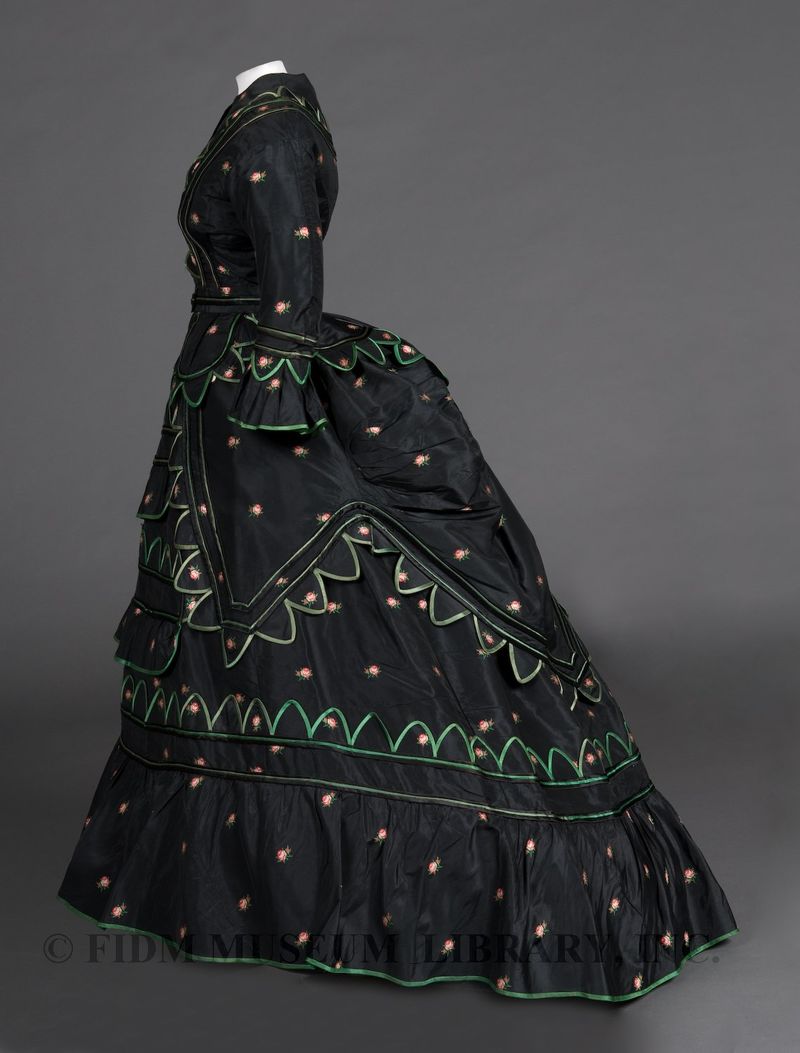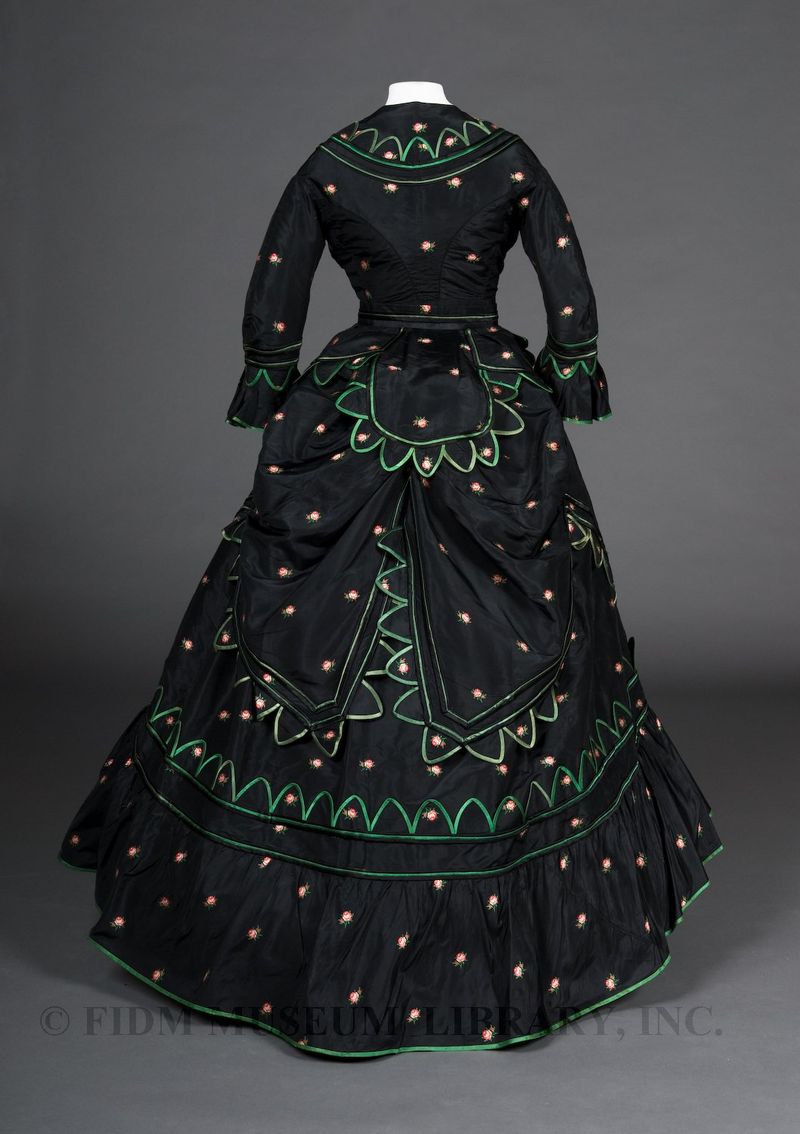Our third most popular post of 2011 features a striking green and black day ensemble from the early 1870s. If you've been following our countdown, this ensemble may look familiar. That's because yesterday's post on 1880s bustles included a link to this post. In coloration, it is reminiscent of our Madame Olympe reception gown.
************
 Day ensemble
Day ensemble
Silk taffeta
1870-72
Gift of Anne Stampfer
94.661.1A-D
About 1868, the crinoline silhouette went out of style. The smooth, distinctly bell-like shape of the crinoline supported skirt began to change form, with the fullness moving towards the back of the shirt. This new skirt shape required a different kind of understructure: the bustle. Essentially a cage crinoline cut in half, the bustle supported the back of the skirt, while leaving the front unsupported. In the early years of the 1870s, the bustle usually extended from the waist to about the mid-calf. A c. 1871 bustle of cotton with metal boning can be found here. The bustle was fashionable until about 1875, when it went out of style as skirts were fitted closer to both the front and back of the body. Beginning about 1883, the bustle enjoyed another round of popularity until finally going entirely out of fashion about 1890.
 In the early 1870s, the unmistakable shape of the bustle was accentuated by layers of fabric, which were ruched, pleated, swagged or gathered into shapes that emphasized and exaggerated the human form. These fabric swags weren't simply tacked onto the waistband of the skirt; they were usually separate elements worn over a skirt. According to the fashion periodicals Peterson's Magazine and Harper's Bazaar, the most common combination consisted of a bodice, an underskirt (which wasn't an underskirt in the sense of underwear, but in its placement), a shorter overskirt that was shaped and puffed at the back, and a belt. The day ensemble pictured here consists of 4 separate elements: a day bodice, underskirt, a polonaise-style overskirt, and a peplum belt. Though it's slightly difficult to distinguish, the belt consists of a narrow sash attached to the scalloped roundels just below the waist.
In the early 1870s, the unmistakable shape of the bustle was accentuated by layers of fabric, which were ruched, pleated, swagged or gathered into shapes that emphasized and exaggerated the human form. These fabric swags weren't simply tacked onto the waistband of the skirt; they were usually separate elements worn over a skirt. According to the fashion periodicals Peterson's Magazine and Harper's Bazaar, the most common combination consisted of a bodice, an underskirt (which wasn't an underskirt in the sense of underwear, but in its placement), a shorter overskirt that was shaped and puffed at the back, and a belt. The day ensemble pictured here consists of 4 separate elements: a day bodice, underskirt, a polonaise-style overskirt, and a peplum belt. Though it's slightly difficult to distinguish, the belt consists of a narrow sash attached to the scalloped roundels just below the waist.
Though the many elements of our ensemble are constructed from the same fabric, this wasn't always the case. In February 1871, Arthur's Lady's Home Magazine featured two short, swagged and gathered overskirts, both of which could be made of any "fashionable winter materials." Either overskirt could then be worn over another skirt, as long as any trimmings "correspond[ed] with the rest on the costume." This suggests that the overskirt, which required much less fabric, could be worn to update an older ensemble or to extend a limited wardrobe.
Fashion plates indicate that it was not uncommon in the early 1870s for a dress to feature one or more strong, often contrasting, colors. This October 1870 fashion plate from Peterson's Magazine pictures five dresses. Of these five, three feature strongly contrasting colors: a green and black walking dress, a purple walking dress with black trim and a pale cream house or walking dress trimmed with black. Note that the dresses at the far left and far right feature scalloped trim similar to the green trimmed scallops on this dress. The red silk house dress at the center of this March 1871 fashion plate from Peterson's Magazine features the same strongly horizontal embellishment seen below. Both fashion plates are part of the Los Angeles Public Library Casey Fashion Plate Collection, a fully searchable archive of British and American fashion plates.




This is really a beautiful dress. The detail is stunning. Can’t imagine sitting in it.
It *is* striking!